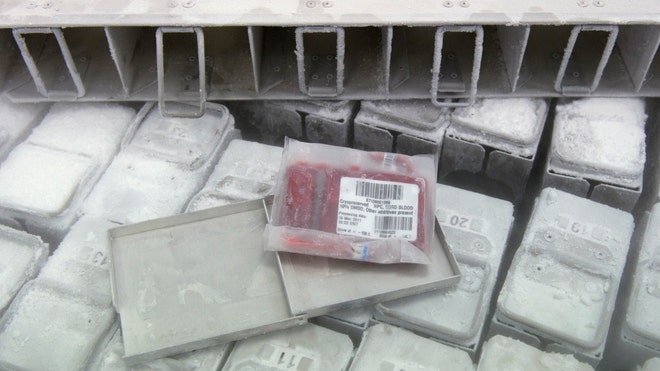
In order to preserve biological materials over an extended period of time, doctors rely on a process known as cryopreservation – a procedure that involves cooling human tissues to sub-zero temperatures. This frozen state effectively blocks chemical reactions from occurring and causing any damage to the materials, allowing them to remain viable for medical use later on.
However, cryopreservation is a risky process and is often reserved for the conservation of smaller groups of tissues or individual cells – such as embryos and stem cells. Freezing larger biological tissues is much more difficult. These materials often contain large amounts of water, which form ice crystals when frozen, causing significant damage to the cells and tissue.
But now, freezing larger amounts of human tissue may soon become a feasible option. Researchers from Villanova University have discovered how ice crystals invade and damage biological material during the freezing process – a significant discovery that could lead to new methods of preventing tissue injury during cryopreservation.
By overcoming this obstacle, freezing complex human tissues such as full-sized donor organs or artificially engineered replacement tissues could be a very real option for physicians.
“If you can cryopreserve tissue or even organs, then you have a way of storing them and of transporting them,” senior author Dr. Jens Karlsson, of the department of mechanical engineering at Villanova University, told FoxNews.com. “Now if you want to do a (lung) transplantation, you’re rushing the harvest organ from one hospital to another by helicopter, and you only have a few hours to do it. But if you’re able to preserve the tissue, then you have as much time as you want and you can really find the best match for the tissue and transport it over much longer distances.”
To better understand how ice interacts with cells as they freeze, Karlsson and his team utilized a video cryomicroscrope, which allowed them to observe the freezing process using high-speed imaging.
“We could record what happens and play it back in slow motion and really see in great detail what the interactions are between the ice, and cells in the tissue,” Karlsson said.
With this microscope, the team monitored the freezing events of genetically modified cells, some of which contained certain junction proteins and some of which did not. These junction proteins either suppressed or encouraged the formation of the cells’ gap junctions and tight junctions– channels that connect adjacent cells together. Gap junctions directly connect the cytoplasm of two cells, while tight junctions provide an even closer connection by firmly stitching together the cells’ plasma membranes.
The researchers found that when the gap junctions were suppressed in the cells, the ice still spread freely throughout the tissue. This meant that the extremely snug tight junctions played a significant role in allowing the ice to infiltrate the cells.
“What we found was that the ice is able to enter through these pathways that are between cells,” Karlsson said. “When cells are connected to each other, normally it’s a pretty tight connection, but the ice can actually find its way through nanoscale pores or openings that are in these seams that hold the cells together. Once the ice finds its way into those spaces, then it can trigger the cells themselves to crystallize.”
With this newfound knowledge, Karlsson said it may be possible to develop new techniques for cryopreservation that involve blocking ice from entering these cell pathways or diverting ice so that it grows in other directions.
“Certainly for the part of the medical industry that deals with living biological materials as a tool in treating illnesses, the ability to cryopreserve is essential,” Karlsson said. “It can make or break that industry.”
The research was published in the November 5 issue of theBiophysical Journal, a Cell Press publication.
Source: Viralnewschart

